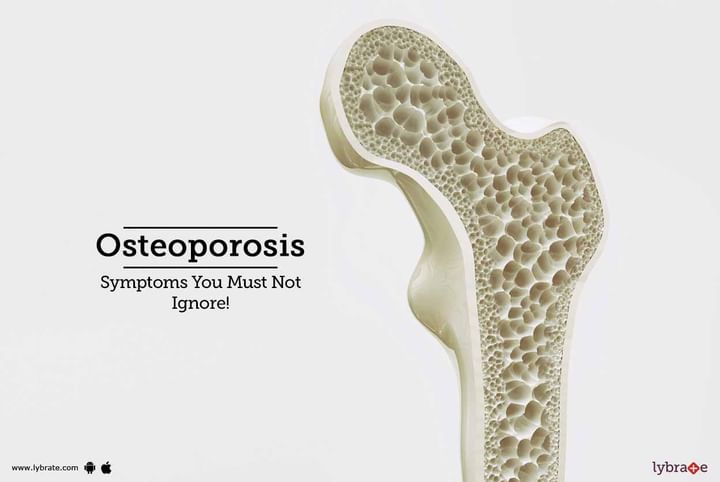Osteoporosis - Symptoms You Must Not Ignore!
Osteoporosis is a bone disease that happens when bone density decreases and the body stops producing as much bone as it did before. As a result, bones become weak and may break from a fall or, in serious cases, from sneezing or minor bumps. It can affect both males and females but it is most likely to occur in women after menopause, because of a sudden decrease in estrogen, the hormone that usually protects against osteoporosis.
Symptoms of Osteoporosis-
The early stages of osteoporosis do not cause any symptoms or warning signs. In most cases, people with osteoporosis do not know that they have the condition until they have a fracture. If symptoms do appear, some of the earliest ones may include receding gums, weakened grip strength, weak and brittle nails, back pain, loss of height over time, a stooped posture, and a bone fracture that occurs much more easily than expected.
Causes of Osteoporosis-
Some of the leading reasons behind osteoporosis include the following:
- Age: The biggest cause of osteoporosis is age. It mostly affects people aged above 50.
- Menopause: Another primary cause of osteoporosis in women, which occurs around the age of 45 to 55 years. Due to the changes in hormone levels associated with it, menopause can cause a woman’s body to lose bone even more quickly.
- Reduced sex hormones: Lower estrogen levels appear to make it harder for the bone to reproduce.
- Ethnicity: White people and Asians are more susceptible than other ethnic groups.
- Bone structure: Being tall or slim increases the risk of osteoporosis.
- Vitamin D deficiency: In case of vitamin D deficiency, the body cannot absorb adequate amounts of calcium from the diet to prevent osteoporosis.
Risk Factors for Osteoporosis-
A number of factors can increase the likelihood of osteoporosis, these may include your age, race, lifestyle choices, and medical condition and its associated treatment. Some of the risk factors for osteoporosis are out of your control, including sex, age, race, family history, and body frame size. Osteoporosis is more common in people who have too much or little of certain hormones in their bodies. Examples include sex hormones, thyroid hormones, and hormones released by the adrenal glands. Osteoporosis is more likely to occur in people who have low calcium intake, eating disorder, and gastrointestinal surgery. Osteoporosis has also been associated with medications used to combat or prevent seizures, gastric reflux, cancer, and transplant rejection. Even lifestyle choices such as sedentary lifestyle, excessive alcohol consumption, and tobacco use can increase your risk of osteoporosis.
Prevention of Osteoporosis-
There are many risk factors for osteoporosis that you cannot control. These include being female, getting older, and having a family history of osteoporosis. There are some of the factors, however, that does fall within your control. Some of these ways to control osteoporosis include getting plenty of vitamin D and calcium, doing weight-bearing exercises, abstinence from smoking and for women, weighing the pros and cons of hormone therapy. If you are at an increased risk of osteoporosis, talk to your doctor about the best way to prevent it and do that as early as possible.



+1.svg)
